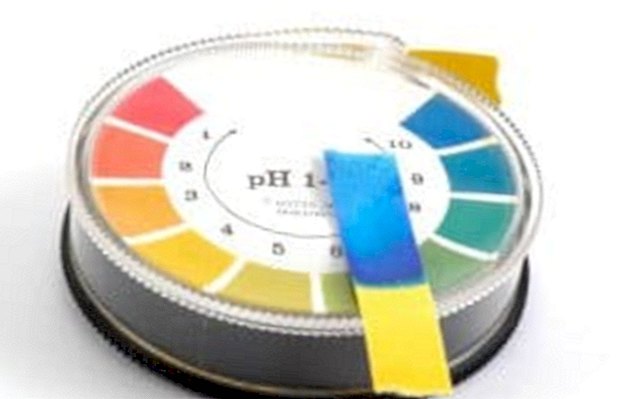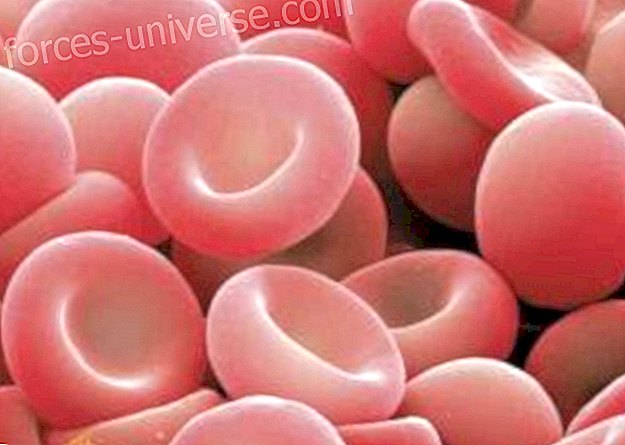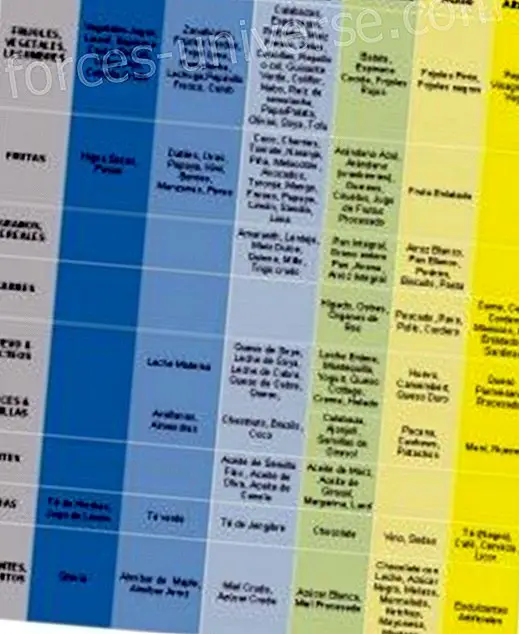Table of contents hide 1 Acid-base balance in the body 2 Other Important Factors We Should Know About Acidosis 3 Food Classification 4 AN EXCELLENT INDICATOR: URINE 5 Maintain the Alkaline Body  Most of the food that surrounds us and to which we have access has an acidifying effect on our body. And what does that mean? Well, it has a negative, sick effect! Let's see, let's start with drinks, Coca-Cola, Fantas, alcohol, Red Bull's, etc., going through bakeries, sweets and sweets, wheat refined in all kinds of breads, snacks, pastas, going through pizzas, pasta, white rice, all types of meat, steaks, sausages, sirloins, etc., etc. The vast majority of food that is promoted in restaurants, fast food places, Pans & Company, Burgers Kings, etc., etc. Everything has an acidifying effect, therefore, that makes our body sick. No wonder that this is how knowing the will of the dark part in reducing our human and spiritual potential, the more intoxicated and sick we are, the better! The less dangerous we will be! In this post, I want to introduce the topic of Alkalinity-Body acidity and its effects on our physical-mental-emotional well-being. No wonder the Vatican has its own garden!
Most of the food that surrounds us and to which we have access has an acidifying effect on our body. And what does that mean? Well, it has a negative, sick effect! Let's see, let's start with drinks, Coca-Cola, Fantas, alcohol, Red Bull's, etc., going through bakeries, sweets and sweets, wheat refined in all kinds of breads, snacks, pastas, going through pizzas, pasta, white rice, all types of meat, steaks, sausages, sirloins, etc., etc. The vast majority of food that is promoted in restaurants, fast food places, Pans & Company, Burgers Kings, etc., etc. Everything has an acidifying effect, therefore, that makes our body sick. No wonder that this is how knowing the will of the dark part in reducing our human and spiritual potential, the more intoxicated and sick we are, the better! The less dangerous we will be! In this post, I want to introduce the topic of Alkalinity-Body acidity and its effects on our physical-mental-emotional well-being. No wonder the Vatican has its own garden!  The residues that originate in this combustion process are of acidic nature and must be evacuated from the body through the natural pathways of elimination (kidneys, intestine, skin and lungs). To adequately fulfill this task the blood must maintain a slight level of alkalinity. In a healthy person, the pH of the blood (lymph, cerebrospinal fluid, etc.) is between 7.40 and 7.45. When the level of acidity increases, due to certain mechanisms of self-regulation, the blood manages to preserve this vital balance. It does this through the contribution of bases (alkalis) that neutralize acids. Therefore, to obtain a healthy cellular metabolism, it is necessary that, together with oxygen, the blood has a constant flow of alkaline substances, in order to neutralize the acids. In the first instance, blood obtains these bases from food. In case of further need - be it due to excess acids or nutritional deficiencies of bases - you can use the alkaline reserve of bones, teeth, tissues. In this way the blood becomes an ladr n of the organic structure, with the sole purpose of restoring the vital acid-basic balance. This starts the decalcification and demineralization mechanism. These mechanisms lead us to bone wear, degeneration of the joints, weak hair, mucosal lesions, respiratory tract conditions.
The residues that originate in this combustion process are of acidic nature and must be evacuated from the body through the natural pathways of elimination (kidneys, intestine, skin and lungs). To adequately fulfill this task the blood must maintain a slight level of alkalinity. In a healthy person, the pH of the blood (lymph, cerebrospinal fluid, etc.) is between 7.40 and 7.45. When the level of acidity increases, due to certain mechanisms of self-regulation, the blood manages to preserve this vital balance. It does this through the contribution of bases (alkalis) that neutralize acids. Therefore, to obtain a healthy cellular metabolism, it is necessary that, together with oxygen, the blood has a constant flow of alkaline substances, in order to neutralize the acids. In the first instance, blood obtains these bases from food. In case of further need - be it due to excess acids or nutritional deficiencies of bases - you can use the alkaline reserve of bones, teeth, tissues. In this way the blood becomes an ladr n of the organic structure, with the sole purpose of restoring the vital acid-basic balance. This starts the decalcification and demineralization mechanism. These mechanisms lead us to bone wear, degeneration of the joints, weak hair, mucosal lesions, respiratory tract conditions.  It follows that we must be careful in the contribution of alkalizing agents that we make to our body through the food we eat, trying to avoid food and acidifying situations. A prolonged time with the acidic body is the same as corrosion, this will corrode tissues, veins and arteries. When the pH becomes acidic there is oxygen deficiency, this causes the creation of harmful anaerobic microforms, the formation of germs, fungi and viruses.
It follows that we must be careful in the contribution of alkalizing agents that we make to our body through the food we eat, trying to avoid food and acidifying situations. A prolonged time with the acidic body is the same as corrosion, this will corrode tissues, veins and arteries. When the pH becomes acidic there is oxygen deficiency, this causes the creation of harmful anaerobic microforms, the formation of germs, fungi and viruses.
Sadness, hyper-emotionality, tendency to depression, nervousness, irritability.
2-HEAD
Headaches, conjunctivitis, paleness.
3-MOUTH
Acid saliva, swollen and sensitive gums, high irritation of the tonsils and pharyngitis that leads to repeated infections of the mucous membranes.
4-TEETH
Caries and teeth cracked or fragile.
Sensitivity of teeth in contact with cold, hot or acidic foods.
5-STOMACH
Heartburn, acid belching, spasms, stomach aches, gastritis and even ulcers.
6-INTESTINES
Burning in the rectum, predisposition to intestinal inflammations and discoloration of the beams due to exhaustion.
7-KIDNEYS-VESICLE
Acidic urine, irritation and burning in the bladder and urethra. Kidney and bladder stones.
8-RESPIRATORY ROUTES
Sensitivity of the respiratory tract to cold, frequent colds, bronchitis, sinusitis, angina, tonsil hypertrophy, tendency to allergies, cough and rough throat due to irritation.
9-SKIN
Acid sweat, dry skin and irritations.
Cracks between the fingers and around the nails, mycosis, pimples, various eczema.
10-NAILS
Nails become thinner, break and break easily.
Stretch marks and white spots.
11-MUSCLES
Cramps and spasms, tendency to tetany, lumbago and torticollis.
12-BONE AND ARTICULAR SYSTEM
Demineralization of the bones: osteoporosis, osteomalacia and rickets.
Fractures and slow in their consolidation. Joint crunch, vertebrae blockage, rheumatism, osteoarthritis, arthritis, sciatica and herniated disc.
Migratory joint pain.
13-CIRCULATORY SYSTEM
Hypotension, poor circulation, extreme sensitivity to cold. Tendency to anemia and bleeding. Chilblains
14-ENDOCRINE GLANDS
Exhaustion and hypofunctioning of the glands in general, except for the thyroid, which has a tendency to accelerate.
15-GENITAL BODIES
Inflammation of the genital pathways by acids. They favor infections.
16-NERVOUS SYSTEM
Excessive sensitivity to pain in general, insomnia.Food classification
Let's see what is meant by acidifying and alkalizing foods. Our nutrients have varying degrees of acidity or alkalinity. Pure water, which is neutral, has a pH 7.07. Basically, all fruits and vegetables are alkalizing . Although the fruit has a low pH (that is, it is acidic), we must avoid widespread confusion: the chemical reaction of a food outside the body is not the same. When the food is metabolized, it can generate a completely different reaction to its original characteristic. Its the case of the lemon or the honey. Both have acidic pH, but once inside the body they cause an alkaline reaction. Minerals also play an important role in the acidifying or alkalizing behavior of food and allow us to make a more conscious choice.
Certain qualities of food are lost in cooking water, hence the importance of steaming. We also understand the high therapeutic value of the broths, which preserve all the alkaline content of the vegetables and that are so balancing in sick and convalescent. In general, cereals generate acid waste more in wheat and corn and less in barley, quinoa. On the other hand, legumes and seeds are slightly acidifying due to their protein content, but with varieties. Dairy products are acidifying elements, fresh unpasteurized milk is somewhat more alkaline. GOOD AND BAD ACIDS Among the beneficial ones are fruit trees, citrus, tartaric etc. These are weak acids that once metabolized in the body are combined with minerals, sodium, calcium, potassium and give rise to mineral salts. On the opposite side are the oxalic, present in chard, spinach that decreases calcium absorption. Benzoic acid, present in plums is contraindicated in gout and rheumatism. That does not mean that we should reject the consumption of these foods but we should moderate them if we suffer from any of these pathologies. Inadvisable are soft drinks which are usually accompanied by additives and acidulants. The acids present in meats, sausages and dairy products, the incorrect elimination of acids such as uric give rise to ailments such as arthritis, osteoarthritis, rheumatism, etc. A vegetative diet that excludes meat is not necessarily ideal if consumed in excess, eggs, cheeses, legumes, refined cereals, coffee, tea, chocolate, soda, white sugar. Table of acid-alkaline foods. This table is quite good, very complete and extensive. I observe, after looking at many lists, that sometimes do not coincide with each other, so each one should investigate further. But there are some homogeneous parameters in most of them.
 Most of the food that surrounds us and to which we have access has an acidifying effect on our body. And what does that mean? Well, it has a negative, sick effect! Let's see, let's start with drinks, Coca-Cola, Fantas, alcohol, Red Bull's, etc., going through bakeries, sweets and sweets, wheat refined in all kinds of breads, snacks, pastas, going through pizzas, pasta, white rice, all types of meat, steaks, sausages, sirloins, etc., etc. The vast majority of food that is promoted in restaurants, fast food places, Pans & Company, Burgers Kings, etc., etc. Everything has an acidifying effect, therefore, that makes our body sick. No wonder that this is how knowing the will of the dark part in reducing our human and spiritual potential, the more intoxicated and sick we are, the better! The less dangerous we will be! In this post, I want to introduce the topic of Alkalinity-Body acidity and its effects on our physical-mental-emotional well-being. No wonder the Vatican has its own garden!
Most of the food that surrounds us and to which we have access has an acidifying effect on our body. And what does that mean? Well, it has a negative, sick effect! Let's see, let's start with drinks, Coca-Cola, Fantas, alcohol, Red Bull's, etc., going through bakeries, sweets and sweets, wheat refined in all kinds of breads, snacks, pastas, going through pizzas, pasta, white rice, all types of meat, steaks, sausages, sirloins, etc., etc. The vast majority of food that is promoted in restaurants, fast food places, Pans & Company, Burgers Kings, etc., etc. Everything has an acidifying effect, therefore, that makes our body sick. No wonder that this is how knowing the will of the dark part in reducing our human and spiritual potential, the more intoxicated and sick we are, the better! The less dangerous we will be! In this post, I want to introduce the topic of Alkalinity-Body acidity and its effects on our physical-mental-emotional well-being. No wonder the Vatican has its own garden! The acid-base balance in the body
Initially it is worth explaining what acidity and alkalinity mean . These two terms respond to the way of classifying the reaction of any element. The degree of acidity or alkalinity is measured through a scale called pH (hydrogen potential) ranging from O (acid end) to 14 (alkaline end), the neutral value being located in the center (7). That is, between O and 7 we have the acidity values and from 7 to 14 the alkalinity values. Let's look at how the mechanism of acidity and alkalinity works in the body. The 60 trillion cells that make up our body, need to feed, eliminate waste and constantly renew. In this sense, the blood fulfills two vital functions: to take to all the cells the nutritious materials that they need and to remove from them the toxic residues and acids that are produced as a result of the transformation of said nutrients (metabolism). Thanks to the process of cellular respiration, the cells receive part of the oxygen they need for their vital processes. A kind of internal combustion is produced at the cellular level, since heat is released bodily. The residues that originate in this combustion process are of acidic nature and must be evacuated from the body through the natural pathways of elimination (kidneys, intestine, skin and lungs). To adequately fulfill this task the blood must maintain a slight level of alkalinity. In a healthy person, the pH of the blood (lymph, cerebrospinal fluid, etc.) is between 7.40 and 7.45. When the level of acidity increases, due to certain mechanisms of self-regulation, the blood manages to preserve this vital balance. It does this through the contribution of bases (alkalis) that neutralize acids. Therefore, to obtain a healthy cellular metabolism, it is necessary that, together with oxygen, the blood has a constant flow of alkaline substances, in order to neutralize the acids. In the first instance, blood obtains these bases from food. In case of further need - be it due to excess acids or nutritional deficiencies of bases - you can use the alkaline reserve of bones, teeth, tissues. In this way the blood becomes an ladr n of the organic structure, with the sole purpose of restoring the vital acid-basic balance. This starts the decalcification and demineralization mechanism. These mechanisms lead us to bone wear, degeneration of the joints, weak hair, mucosal lesions, respiratory tract conditions.
The residues that originate in this combustion process are of acidic nature and must be evacuated from the body through the natural pathways of elimination (kidneys, intestine, skin and lungs). To adequately fulfill this task the blood must maintain a slight level of alkalinity. In a healthy person, the pH of the blood (lymph, cerebrospinal fluid, etc.) is between 7.40 and 7.45. When the level of acidity increases, due to certain mechanisms of self-regulation, the blood manages to preserve this vital balance. It does this through the contribution of bases (alkalis) that neutralize acids. Therefore, to obtain a healthy cellular metabolism, it is necessary that, together with oxygen, the blood has a constant flow of alkaline substances, in order to neutralize the acids. In the first instance, blood obtains these bases from food. In case of further need - be it due to excess acids or nutritional deficiencies of bases - you can use the alkaline reserve of bones, teeth, tissues. In this way the blood becomes an ladr n of the organic structure, with the sole purpose of restoring the vital acid-basic balance. This starts the decalcification and demineralization mechanism. These mechanisms lead us to bone wear, degeneration of the joints, weak hair, mucosal lesions, respiratory tract conditions.  It follows that we must be careful in the contribution of alkalizing agents that we make to our body through the food we eat, trying to avoid food and acidifying situations. A prolonged time with the acidic body is the same as corrosion, this will corrode tissues, veins and arteries. When the pH becomes acidic there is oxygen deficiency, this causes the creation of harmful anaerobic microforms, the formation of germs, fungi and viruses.
It follows that we must be careful in the contribution of alkalizing agents that we make to our body through the food we eat, trying to avoid food and acidifying situations. A prolonged time with the acidic body is the same as corrosion, this will corrode tissues, veins and arteries. When the pH becomes acidic there is oxygen deficiency, this causes the creation of harmful anaerobic microforms, the formation of germs, fungi and viruses. Other Important Factors We Should Know About Acidosis

- The food we eat is transformed into acidic waste and the importance of expelling it in due time is extremely important.
- Acidic blood coagulates more quickly and causes the veins to clog.
- Over-acidity interferes with life itself, it is primarily responsible for all diseases, including heart attacks, premature aging and obesity.
- Our 75 trillion cells are slightly acidic but surrounded by an alkaline fluid. Polarity is essential in chemistry or for the exchange of energy but this is difficult with acidity. This is one of the reasons why people lose their energy.
- The acidic pH interferes with mineral absorption so calcium absorption will be inefficient.
- Excess acidity weakens all our systems and forces the body to obtain minerals not received from vital organs and bones trying to neutralize acidity.
- The body creates cholesterol (fat deposits) to protect the accumulation of the deadly acid waste critalized out of vital organs such as the liver, heart and kidneys. Obesity is a problem of acidic systems, since in these cases, fat saves our lives. Explains Dr. Robert Young.
- Ordinary or distilled water is neutral (pH 7), sugary drinks such as cola are acidic (pH 2.5).
Sadness, hyper-emotionality, tendency to depression, nervousness, irritability.
2-HEAD
Headaches, conjunctivitis, paleness.
3-MOUTH
Acid saliva, swollen and sensitive gums, high irritation of the tonsils and pharyngitis that leads to repeated infections of the mucous membranes.
4-TEETH
Caries and teeth cracked or fragile.
Sensitivity of teeth in contact with cold, hot or acidic foods.
5-STOMACH
Heartburn, acid belching, spasms, stomach aches, gastritis and even ulcers.
6-INTESTINES
Burning in the rectum, predisposition to intestinal inflammations and discoloration of the beams due to exhaustion.
7-KIDNEYS-VESICLE
Acidic urine, irritation and burning in the bladder and urethra. Kidney and bladder stones.
8-RESPIRATORY ROUTES
Sensitivity of the respiratory tract to cold, frequent colds, bronchitis, sinusitis, angina, tonsil hypertrophy, tendency to allergies, cough and rough throat due to irritation.
9-SKIN
Acid sweat, dry skin and irritations.
Cracks between the fingers and around the nails, mycosis, pimples, various eczema.
10-NAILS
Nails become thinner, break and break easily.
Stretch marks and white spots.
11-MUSCLES
Cramps and spasms, tendency to tetany, lumbago and torticollis.
12-BONE AND ARTICULAR SYSTEM
Demineralization of the bones: osteoporosis, osteomalacia and rickets.
Fractures and slow in their consolidation. Joint crunch, vertebrae blockage, rheumatism, osteoarthritis, arthritis, sciatica and herniated disc.
Migratory joint pain.
13-CIRCULATORY SYSTEM
Hypotension, poor circulation, extreme sensitivity to cold. Tendency to anemia and bleeding. Chilblains
14-ENDOCRINE GLANDS
Exhaustion and hypofunctioning of the glands in general, except for the thyroid, which has a tendency to accelerate.
15-GENITAL BODIES
Inflammation of the genital pathways by acids. They favor infections.
16-NERVOUS SYSTEM
Excessive sensitivity to pain in general, insomnia.
Food classification
Let's see what is meant by acidifying and alkalizing foods. Our nutrients have varying degrees of acidity or alkalinity. Pure water, which is neutral, has a pH 7.07. Basically, all fruits and vegetables are alkalizing . Although the fruit has a low pH (that is, it is acidic), we must avoid widespread confusion: the chemical reaction of a food outside the body is not the same. When the food is metabolized, it can generate a completely different reaction to its original characteristic. Its the case of the lemon or the honey. Both have acidic pH, but once inside the body they cause an alkaline reaction. Minerals also play an important role in the acidifying or alkalizing behavior of food and allow us to make a more conscious choice. - In general, foods that have a high sulfur, phosphorus and chlorine content are acidifying .
- On the other hand, those containing good doses of: calcium, magnesium, sodium and potassium are alkalizing .
Certain qualities of food are lost in cooking water, hence the importance of steaming. We also understand the high therapeutic value of the broths, which preserve all the alkaline content of the vegetables and that are so balancing in sick and convalescent. In general, cereals generate acid waste more in wheat and corn and less in barley, quinoa. On the other hand, legumes and seeds are slightly acidifying due to their protein content, but with varieties. Dairy products are acidifying elements, fresh unpasteurized milk is somewhat more alkaline. GOOD AND BAD ACIDS Among the beneficial ones are fruit trees, citrus, tartaric etc. These are weak acids that once metabolized in the body are combined with minerals, sodium, calcium, potassium and give rise to mineral salts. On the opposite side are the oxalic, present in chard, spinach that decreases calcium absorption. Benzoic acid, present in plums is contraindicated in gout and rheumatism. That does not mean that we should reject the consumption of these foods but we should moderate them if we suffer from any of these pathologies. Inadvisable are soft drinks which are usually accompanied by additives and acidulants. The acids present in meats, sausages and dairy products, the incorrect elimination of acids such as uric give rise to ailments such as arthritis, osteoarthritis, rheumatism, etc. A vegetative diet that excludes meat is not necessarily ideal if consumed in excess, eggs, cheeses, legumes, refined cereals, coffee, tea, chocolate, soda, white sugar. Table of acid-alkaline foods. This table is quite good, very complete and extensive. I observe, after looking at many lists, that sometimes do not coincide with each other, so each one should investigate further. But there are some homogeneous parameters in most of them.

AN EXCELLENT INDICATOR: THE URINE
As we have said, when the body's vital processes develop normally, the blood level is slightly alkaline (pH 7.40). The excess of acids hardly varies this primary parameter of the body. But the disorders are reflected in the field of tissues and fluids in contact with blood. Since excess acids are eliminated through the kidneys and urine, we have a simple and precise way to verify what is happening in our body. Bioelectronic values in a healthy person
Maintain the Alkaline Body






